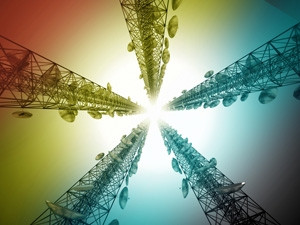
South Africa has one of the slowest average LTE connections in the world, according to an analysis done by wireless coverage mapping company, OpenSignal.
"In some countries, LTE has become a near ubiquitous technology, providing broadband speeds no matter where you go. In other countries, LTE is just beginning its adolescence," says OpenSignal.
Data for the analysis was collected through the OpenSignal app that anonymously crowd-sources data from hundreds of thousands of users around the world. Data was collected between June and August.
South Africa is the tenth slowest country, with an average speed of 8Mbps. The Philippines, Ecuador and Thailand have the same average speed. Kuwait sits at 7Mbps, Bolivia at 6Mbps, Saudi Arabia and Pakistan have 4Mbps, and Costa Rica and Iran are the lowest with 3Mbps.
The top five countries with the fastest average LTE speeds are New Zealand with 36Mbps, Singapore with 33Mbps, Romania with 30Mbps, South Korea with 29Mbps, and Denmark with 26Mbps.
Singapore's StarHub has the fastest average speeds of any global operator at 38Mbps. South Korea experiences the widest LTE coverage, with the network being available on average 97% of the time.
LTE coverage in South Africa is at 58%. The country with the worst coverage, Sri Lanka, only has 38% coverage.
OpenSignal says the latest data shows a bump in speeds across the world, "likely the result of operators upgrading their networks".
"Many operators are deploying new LTE systems in new frequency bands, adding more capacity to their networks, and several are using new LTE-Advanced technologies to boost the speeds available to devices."
In South Africa, all operators now offer an LTE connection.
However, earlier this year, on 17 June, SA missed the International Telecommunication Union's analogue broadcast switch-off deadline. Failure to digitally migrate means spectrum cannot be freed up, which would allow for faster connections.
The analysis shows some of the earliest adopters of LTE, such as the US, Japan, Sweden and Germany, are starting to fall behind in terms of data performance.
The US has an average LTE speed of 10Mbps, Japan 14Mbps, and Sweden and Germany both on 13Mbps.
"In part, these older networks are suffering from their own success. In the US, LTE's introduction in 2010 resulted in a huge base of LTE subscribers in the country today. Those subscribers are all competing for the same network resources, slowing down average speeds," says OpenSignal.
Share